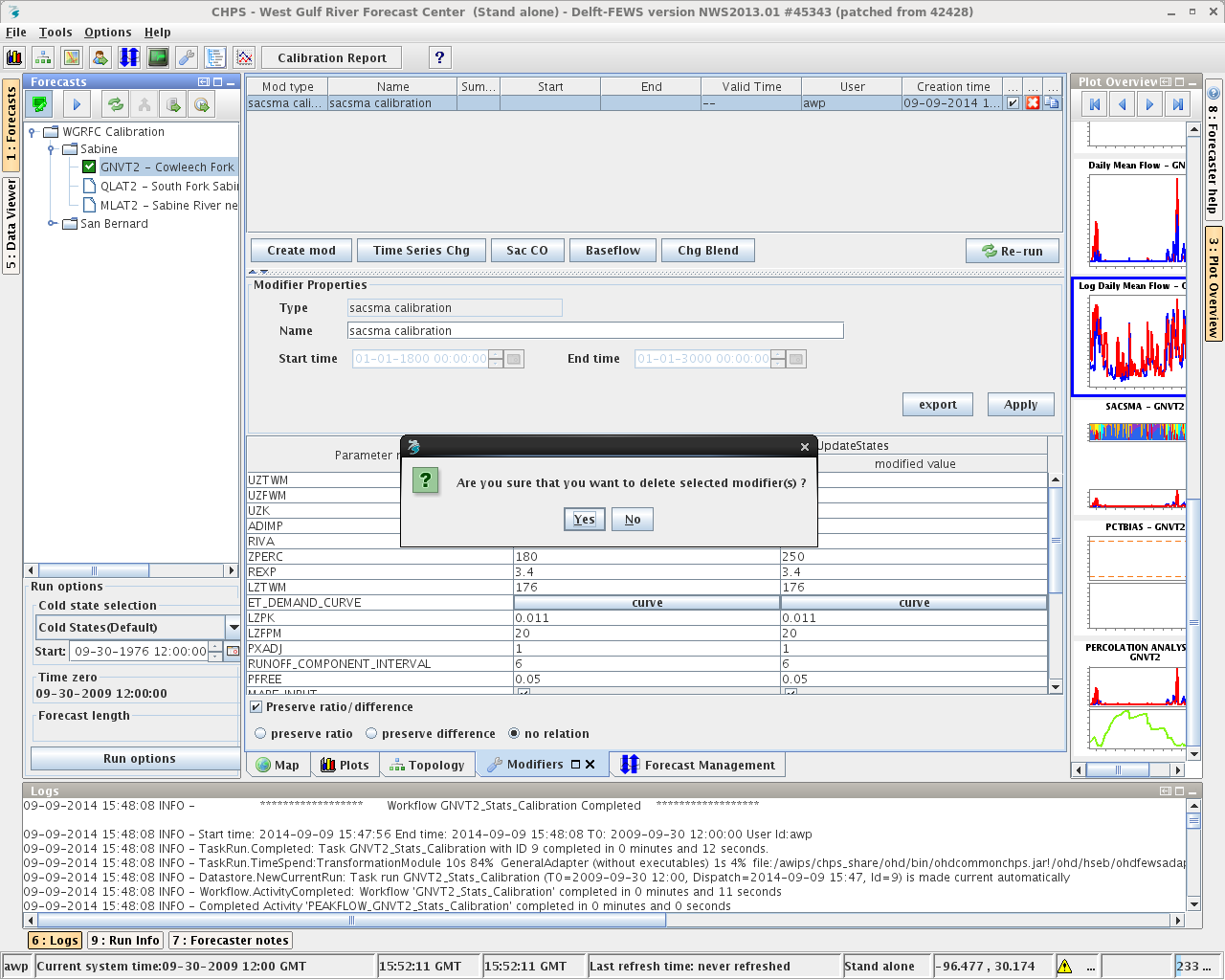3.5 Manage Modifiers
Click each of the tabs to learn more about managing calibration modifiers.
- General Information
- Editing/Saving
- Deleting
- Viewing
- Sharing
You cannot use Modifiers to edit changes to reservoir parameters.
The list of modifiers is a configurable option. Unless a modifier is on the list, you are not able to use it.
Contact the Configuration Focal Point at your office if you would like a modifier added.
The modifiers tab tracks when a modifier was created. Click on a workflow in the top box of the Forecast Management tab and view the modifier currently in use for the segment.
Editing tabular data in Modifiers uses the same procedure as it is in Plots.
You are limited to using the edit by clicking option when editing graphical data. Tabular editing is also an available option.
Modifiers are saved when you click "Apply" or "Apply to".
Practice making modifiers using the following job sheet as a guide. Remember to delete any practice modifiers you make.
Job Sheet: Manage Modifiers
 Calibration is an iterative process.
Calibration is an iterative process.
Deactivate modifiers you are unsure about and view the output.
Delete modifiers that do not produce the desired results.
Hint: Click the image to enlarge/shrink.
You have the option of manually deleting modifiers you no longer need.
Otherwise, the modifiers you create remain in the list until deleted by a Rolling Barrel task.
The CHPS System Manager at your offices defines the Rolling Barrel behavior.
Return to the plots described in Lesson 3.2 and view the results of the edits. The plot refreshes automatically.
Once you are satisfied with the edits, upload the changes to the Central Server using the Configuration Manager. Other users download the files to their system.
You also have the option of exporting the calibration parameters. Export the data in any of the formats available for other CHPS time series, such as Pi-Service, XML, and netCDF.
Click here for information on all available CHPS data types.
Designate a "keeper of the files" who compiles individual calibration files. This "keeper" uploads the new files to the shared office Stand Alone and the operational system.

